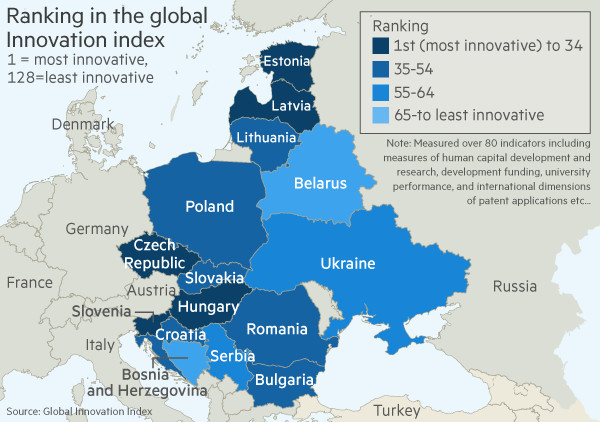Banks’ homegrown efforts dominate Poland’s fintech scene

Simply sign up to the European companies myFT Digest -- delivered directly to your inbox.
Poland’s most popular mobile payments service was not created in a garage or innovation lab. It was designed around a conference table by the heads of country’s six biggest banks, who had decided the market needed a new service.
BLIK, the application they created, allows users to pay in shops, withdraw money from ATMs and transfer money to friends — all via mobile phones. Introduced in 2015, the service has more than 4m users, representing more than 10 per cent of Poland’s population.
It is the kind of service that has helped Poland earn a reputation for innovation in financial services. Every year, Polish companies win awards for innovation at events such as Finovate that showcase banking technologies. Unlike many other markets, this disruption has come from established banks, rather than newcomers.
“In Poland, banks, not start-ups, do fintech,” says Aleksandra Sroka, principal in BCG Poland, a consultancy.
This is due in part to growing competition in the Polish banking sector. In 1989, when communist rule ended, the country had just two retail banks, both of which were state-controlled. International banking groups and new private Polish banks quickly joined the fray.
At first competition was mainly over prices. But in an era of low interest rates, there are limits to the returns on savings and charges on borrowing that banks can offer to clients and still remain solvent. “If you cannot compete with a price, you have to compete with innovation,” says Lukasz Rey, principal at BCG.
In the 2000s, banks started to compete by offering online and later mobile services. The race was led by mBank, owned by Germany’s Commerzbank, followed by Alior. The others, including the biggest state-owned lenders, had to keep up to remain in the game.

Today, services such as free real-time online payments are standard, contactless payment is available in almost every shop throughout the country and customers have a choice of apps for organising their finances.
Some banks are now exploring data-mining solutions to personalise offers for their clients, in a similar manner to Netflix and Amazon.
Idea Bank, one of the fastest-growing private banks in Poland, even has a fleet of mobile ATMs fitted in cars that allow customers to safely withdraw or deposit cash on the doorsteps of their own businesses. “We go against the grain and provide the innovation not only as technology,” says Katarzyna Siwek, the company’s spokesperson.
The bank has also set up hubs for customers in branches where they can use the space for working, organising business meetings, or even recruiting staff.
“When banks all over the world close their branches, we found a way to make our locations vibrant and bustling”, Ms Siwek says.
The company has no “innovation department”, she adds. “The whole organisation is very entrepreneurial and has a start-up character. What helps is that we are a Polish institution — we are not blocked by decision process of big organisations.”
However, innovations developed in Poland’s domestic banking sector are struggling to spread beyond the country. MBank has branches in neighbouring Czech Republic and Slovakia, but most other banks have stuck to their local market.
Jaroslaw Mastalerz, a former vice-president of mBank, points out that Polish banks account for just 0.3 per cent of the global banking market. “We have this feeling of dissatisfaction that the whole world comes to see our solutions, and we serve such a limited group of customers”.
To raise their profile as innovators in the sector, Polish banks are sharing their know-how and business models with foreign lenders and investing in start-ups seeking to sell their products to the industry.
Earlier this year, mBank set up mAccelerator, a fund that will invest $50m in digital start-ups targeting financial services.
Mr Mastalerz, who is head of the fund, says it is an idea they have borrowed from technology companies such as Google. “The best global companies are innovative within but also are able to create an innovation ecosystem around them” he says.


Comments